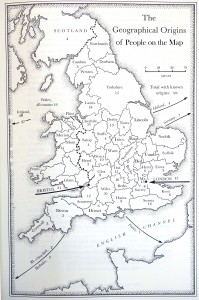David Davies was a Welshman, son of the wealthy Richard Davies. David came in 1683 and settled in Neshaminy, far away from his countrymen in the Welsh Tract. The next summer his father wrote to Penn, glad that his son had arrived, because many on the Morning Star had been sick with dysentery. Davies wrote, “I was som time under great Exercise by Vistions that I had seene that maney of them were cast {in}to the sea but … but my wife was all along wel satisfied of the wel being of her sonn.” 1
David had written to his father that some of his neighbors were agitating to choose him for the Assembly, though Richard was hoping that this would be put off until David had his plantation in better order. Richard added to Penn that, “I am glad that his servants writts soe wel of him and that they serve him in love and that he is carfull of them.” By then Davies’ neighbors were complaining that his dog was running loose and attacking their hogs. Middletown Monthly Meeting sent a committee to deal with him, and force him to pay a fine to widow Walmsley for the loss of her sow. 2
In 1685 David was accused of killing one of his servants. Five of Bucks County’s most important Quakers were appointed to try him. There is no record of the trial, but Davies must have been acquitted.
Soon after Davies was in trouble again with the Middletown Monthly Meeting. His servant Margaret Evans was summoned before the women’s meeting because of her disorderly behavior. She claimed she tried to leave him, but being his bound servant and he very unwilling to set her free, she was forced to stay with him. The men’s meeting took over and summoned Davies before them. He said that he would marry her, contrary to their advice, probably since she was not free to object.
He did marry her, and he died twenty days later.
She had a son and named him David.
Two years later she asked for a certificate of clearness, intending to go back to England.
The story is a wild one, yet we don’t know the things we most want to know. Why did this young man die just after his marriage? And why did Margaret name her son after him?

